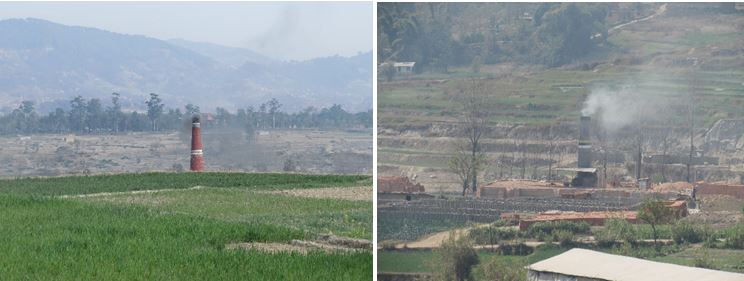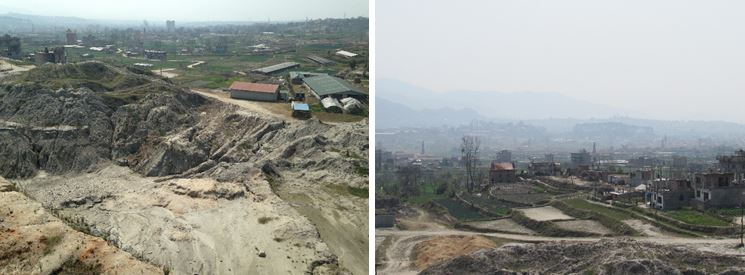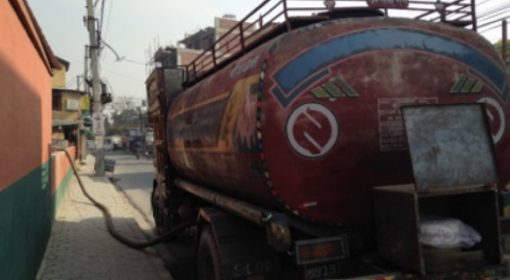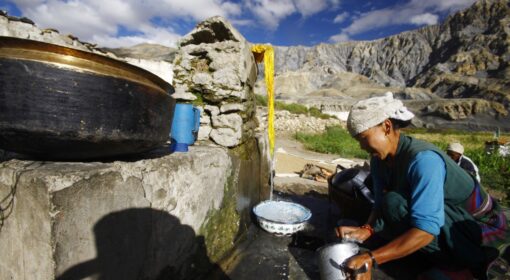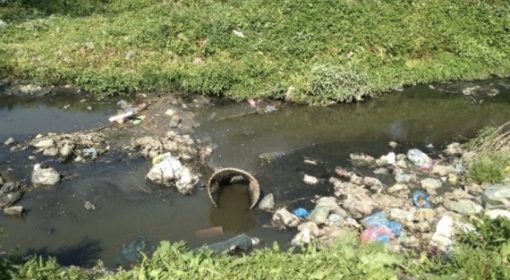Peri-urban water insecurity in the Kathmandu Valley, Nepal
Posted by: Otto Hoffman
February 2017
Nepal is known as the home of the Himalayas with innumerable streams and rivers, and snow-capped mountain peaks with permanent water resources. For all that, people are still lining up at water points – as residents of Kathmandu Valley are manually pumping water. So, some question what has caused this deprivation of water?
Kathmandu Valley is recognized as one of the fastest growing urban areas in South Asia. Consisting of three historical cities – Kathmandu, Lalitpur and Bhaktapur, the valley has a history as the cultural trade hub between India and Tibet. The population in the valley grew from 1.6 million inhabitants in 2001 to over 2.5 million in 2011 and is projected to reach a staggering five million by 2025 (CBS, 2011). Urbanization in the Kathmandu valley is characterized by urban sprawl expanding towards the rural areas. Urbanization and its drivers are creating water insecurity in these peri-urban fringes. In 2010 the Government of Nepal characterized most of the valley as highly vulnerable to climate change.
Sand, bricks and no water
Water insecurity is driven by various factors, but one is the real estate industry itself undoing itself. Small brick kilns have been in operation since the 1990s, feeding much of the urbanization seen today. Many of these brick kilns are located in peri-urban areas of Kathmandu valley. Since the early 1990s, farmers, as well as other land-owners started to convert their land into brick kilns. Brick making generates decent returns but is also highly water-consuming. As the only reliable water sources is groundwater, the pumping for the booming brick industry is having profound effects. Several changes have been observed, but especially falling groundwater levels.
Source: Author, 2016
Furthermore, soil is also excavated not only for the production of bricks but also as foundation material for real estate development and for main roads and bridges. Many hills are a prime source and see their shape disappear over time. In addition, sand mining from the streams and rivers further contributes to the increasing water stress in the valley. Studies have shown the drying of stone spouts or ‘Hitis’ and the falling groundwater levels have been caused by extensive sand mining in peri-urban areas. Sand mining has adverse effects on groundwater recharge and groundwater levels, as less sand is available to act as a “sponge”.
There is a remarkable alliance between kiln owners, sand miners and farmers in the peri-urban areas. The ongoing excavation of sand and soils creates flat terraced land. This changed morphology enables farmers to use the land for growing rice instead of maize, providing a higher price per kilogram of product. This conversion of maize land into paddy fields, however; contributes to water insecurity in the Valley.
Source: Author, 2016
Conflict shaping into new patterns
Parallel to these developments that intensify water insecurity in Kathmandu valley, there is another trend that defines how conflicts are shaping up. Over time communities in the Valley have become frustrated about the efficacy of voicing their needs and addressing the problems of lack of water resource management with local government authorities and other parties involved. With concerns of water going nowhere, new patterns of conflict resolution are shaping up.
The reason why people act this way is that the accountable authorities are not accountable and that communities’ voices are not taken seriously. A new behavior is emerging whereby, communities complain about the issues with household members and neighbors, yet do nothing to resolve them and instead often take matters into their own hands. This can be coined as passive conflict and cooperation: many people start to prefer to think and act on their own rather than going to the responsible authorities to raise the issue of drying boreholes and rivers. The preference is to take action individually, and if not, in a group – not to resolve the conflict but for instead to collectively start drilling deeper boreholes. As a result, of drilling their own boreholes, thus overall leading to further impacts on groundwater resources due to over extraction and lack of monitoring.
Changes that need to be made
At the moment it looks like things are not getting any easier. After the devastating earthquakes in April and May 2015, much more building material is required.
As long as water resource management remains the government’s highest priority for addressing water insecurity, it is crucial to improve the response of tackling water insecurity through active, sustainable water resource management and participatory actions to reverse the negative impact of rapid urbanization, real estate developments and sand mining.
First, governments should develop water security strategies to guide interventions and also become responsive to local needs and concerns. The Karnataka Urban Water Improvement Project (2004 – 2011) in India is an alternative case study to refer to – as a demonstration of how projects could be implemented. It was implemented in phases with special attention on three components: (i) finalizing a policy reform agenda with the State Government; (ii) improvement of service delivery and regular selection of demonstration areas to spawn credibility and lessons from the challenges experienced; and (iii) financing the projects incremental operational costs, including research linked to project management and implementation. The project gained wide recognition due to the 24/7 water delivery. Over 230,000 people directly gained access and was firmly supported by the beneficiaries (The World Bank, 2011; 2014).
So far on the ground nothing has happened in terms of effective regulation of the building industry – as in so many other parts of the world – in particular, peri-urban areas require more attention.
In addition, the formation of community-based groundwater monitoring and management systems are necessary, allowing the problems to be traced and lessons to be learned.
Finally, more effort is needed in monitoring and evaluation of government-led initiatives regarding water resource management in Kathmandu Valley. The Karnataka Urban Water Improvement Project is a sound case study to reference that was implemented in a sustainable manner. The main thing is that all that needs to be done is get serious – and rather than letting problems run their own course, they should be tackled and resolved in the peri-urban fringes. Despite the many problems, unresolved issues are getting bigger. Therefore, it is important to tackle the problems as soon as it appears.
References
Nepal Central Bureau of Statistics. (2011). Source: http://cbs.gov.np/atlas/tables.html?chapter=2&table=2.2. (Accessed on 24 May 2016).
The World Bank. (2011). Karnataka Urban Water Sector Improvement Project. Source: http://documents.worldbank.org/curated/en/234761468044084979/pdf/ICR19500P0825100disclosed0120200110.pdf. (Accessed on 24 May 2016).
The World Bank. (2014). Water Supply and Sanitation: Sector Results Profile. Karnataka Urban Water Sector Improvement Project. Source: http://www.worldbank.org/en/results/2013/04/12/water-sanitation-results-profile. (Accessed on 24 May 2016).
This blog is based on findings from the research project CCMCC by NWO: Climate Policy, Conflicts and Cooperation in Peri-Urban South Asia: Towards Resilient and Water Secure Communities
{jcomments on}
